SunStarHerbs' NMSU Dye Project Narrative
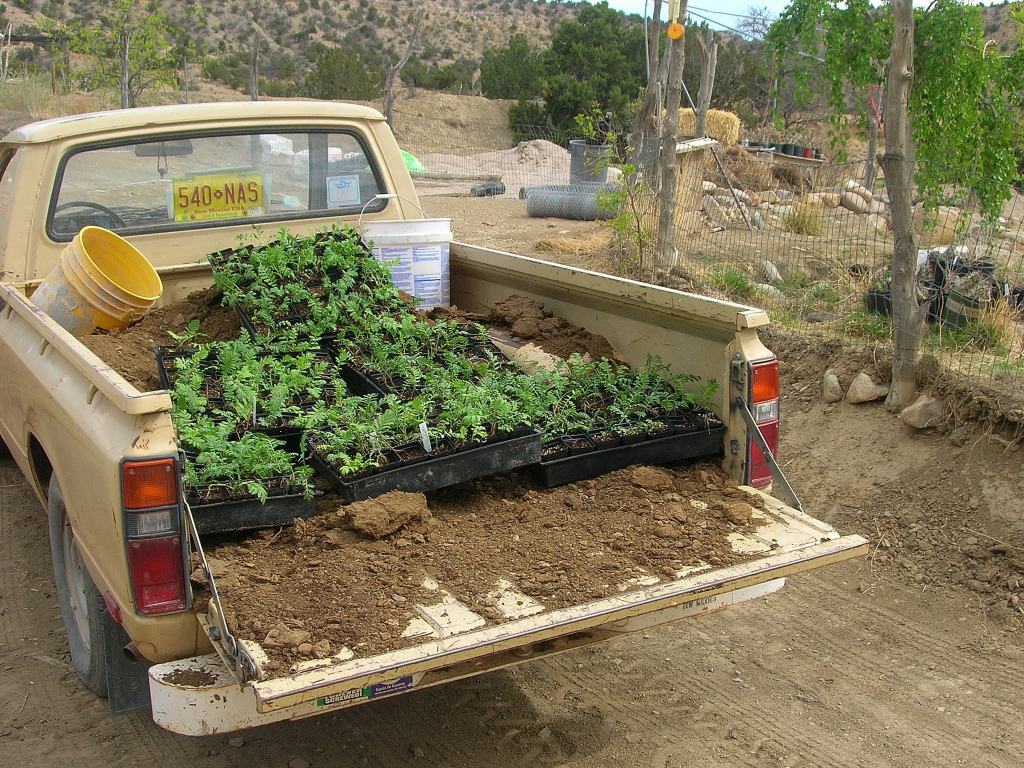
In this
project we were to grow 8 species of natural dye plants, 4 assigned and
4 from our own interest. We were assigned to grow Tansy, Weld, Hopi Black Dye Sunflower
and Cota. We chose to try Marroon Correopsis, Marigold, Black Tepary and Safflower.
We placed this project in our newest Jujube plantings.
Both tansy and sunflower were already being grown here; we
supplied the other two growers with a total of 200 organic tansy starts
and grew the remainder of our stock (154)
in two 90’ rows.

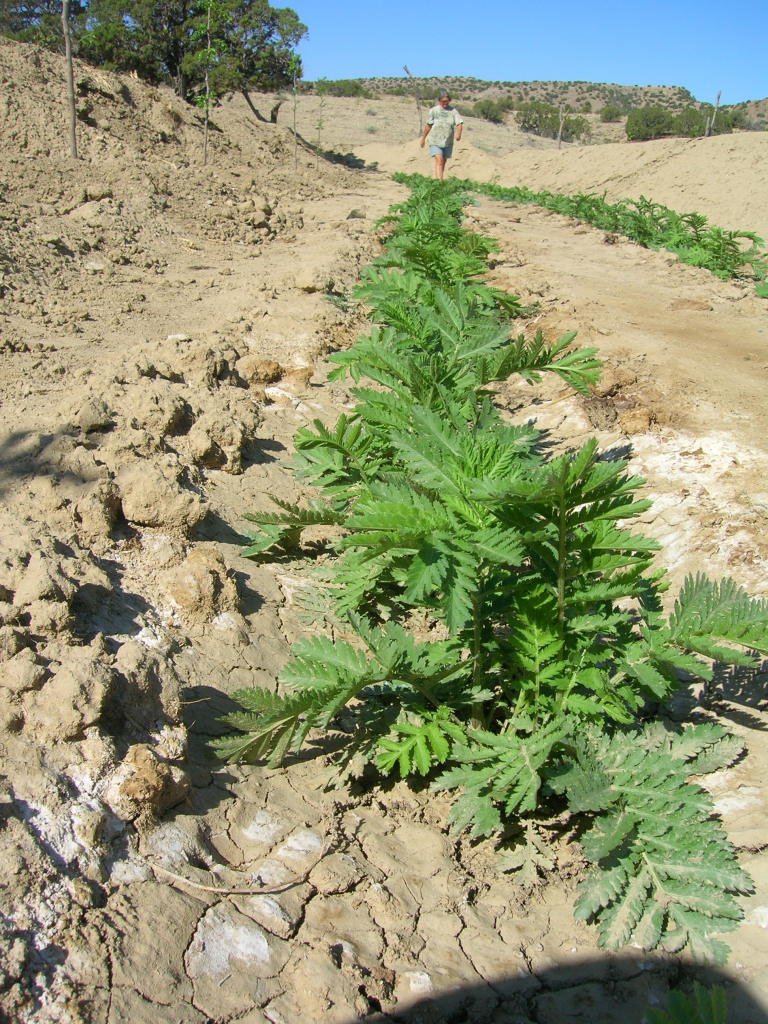
We heavily manured with
goat in the spring.
Tansy grows
well for us. It takes flooding well and is drought resistant. It loves
goat manure and our silty ground.

When it was about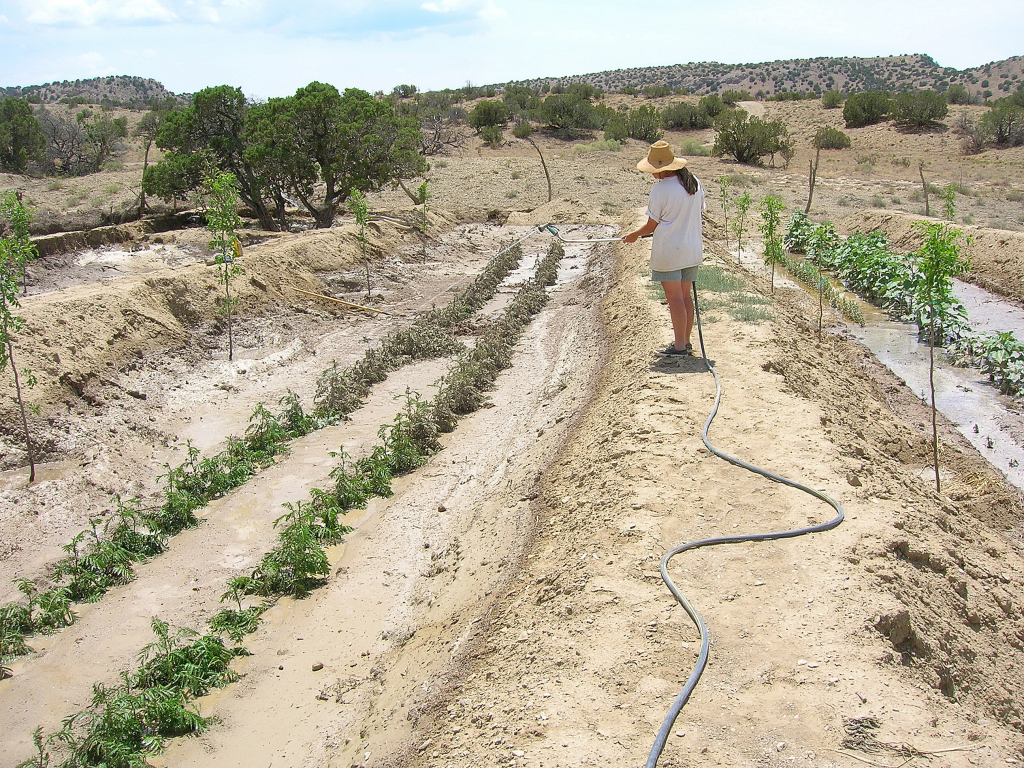 1 foot tall, July
1, the tansy was totally covered with floodwater from a storm.
1 foot tall, July
1, the tansy was totally covered with floodwater from a storm.
The water stood
for 18 hours before we pumped it out of that section of the garden.

We
then hosed
off the mud and juniper litter
from the plants
and they
never missed a beat.
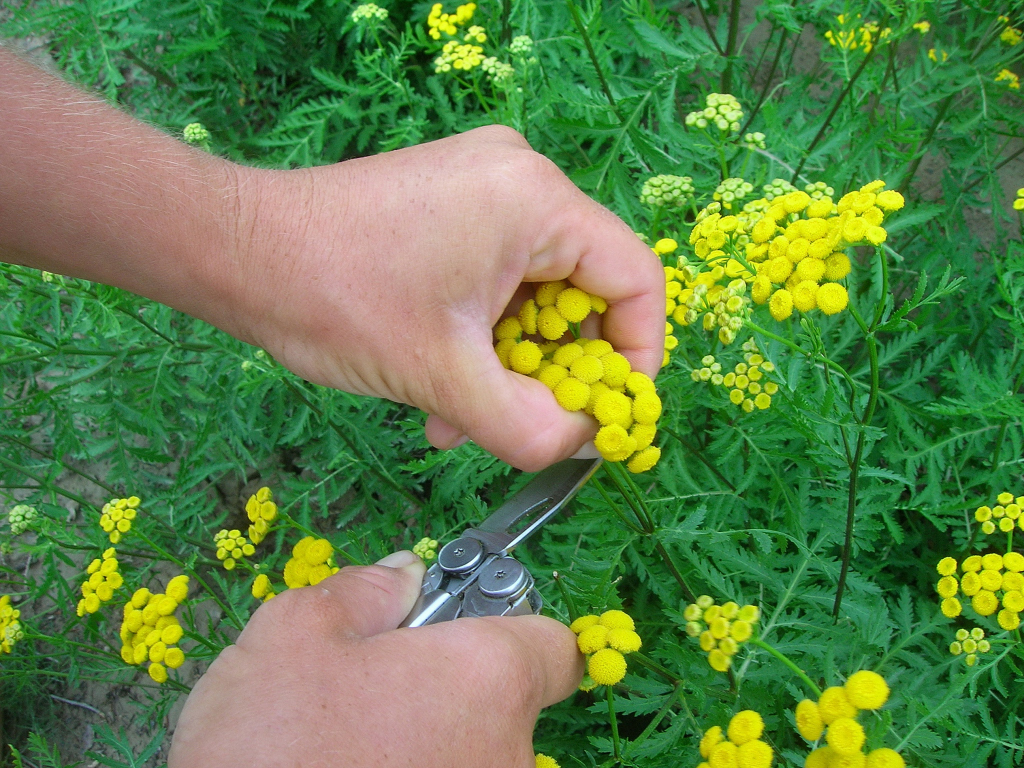
We harvested the
flowers at the peak of their color as they matured in August and
September.
of their color as they matured in August and
September.
After all the flowers were picked we cut the stems and tied
them into 111 “sticks” (22#) which we are presently marketing at $5.00
each as a vermifuge for lice and flies on horses and goats. We are offering tansy flowers at
$3.00 per ounce and have 14# of flowers and 4.5# of leaf. Sticks are selling regularly. (Feb. 1,'07)
which we are presently marketing at $5.00
each as a vermifuge for lice and flies on horses and goats. We are offering tansy flowers at
$3.00 per ounce and have 14# of flowers and 4.5# of leaf. Sticks are selling regularly. (Feb. 1,'07)

The Weld was planted too late in the spring and refused or was unable to arise. We did reserve the
row in hope of a fall start, and reseed it in November. We will see if anything comes up come spring.

The inundation spurred the sunflower to new heights, but we drowned the safflower.
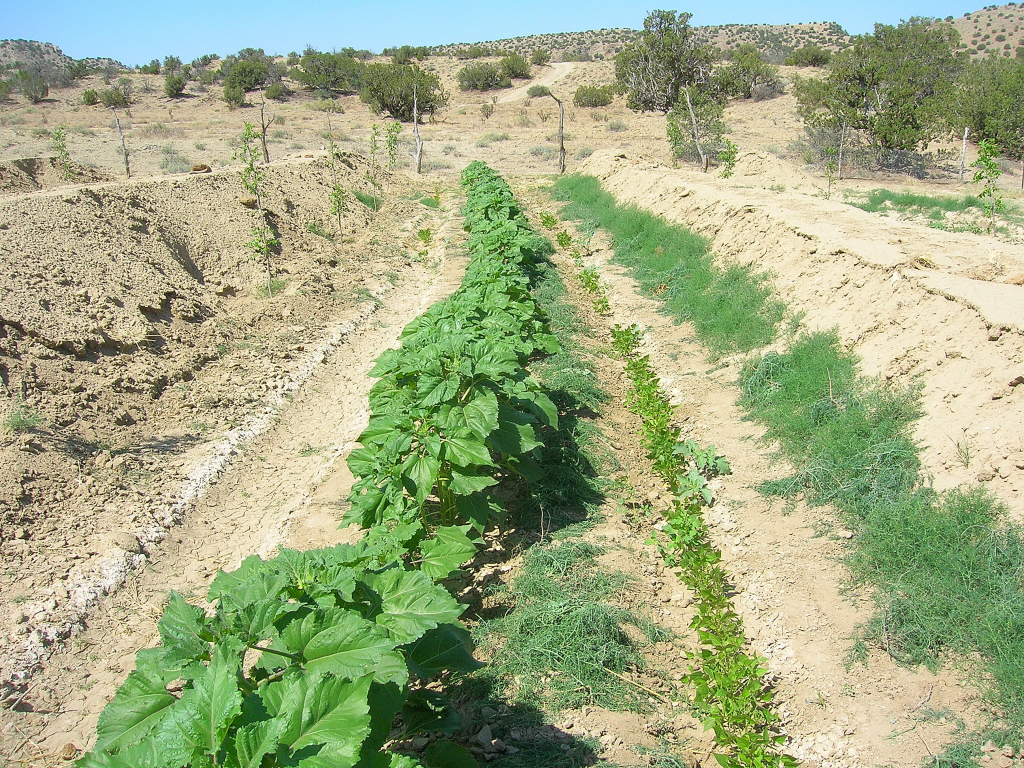
We did not need
to irrigate after July 1. It rained the rest of the summer.
Weld and
half the sunflower seed was supplied by Charles and we seeded one row
(90’) each.
We
seeded the weld twice but none ever came up.
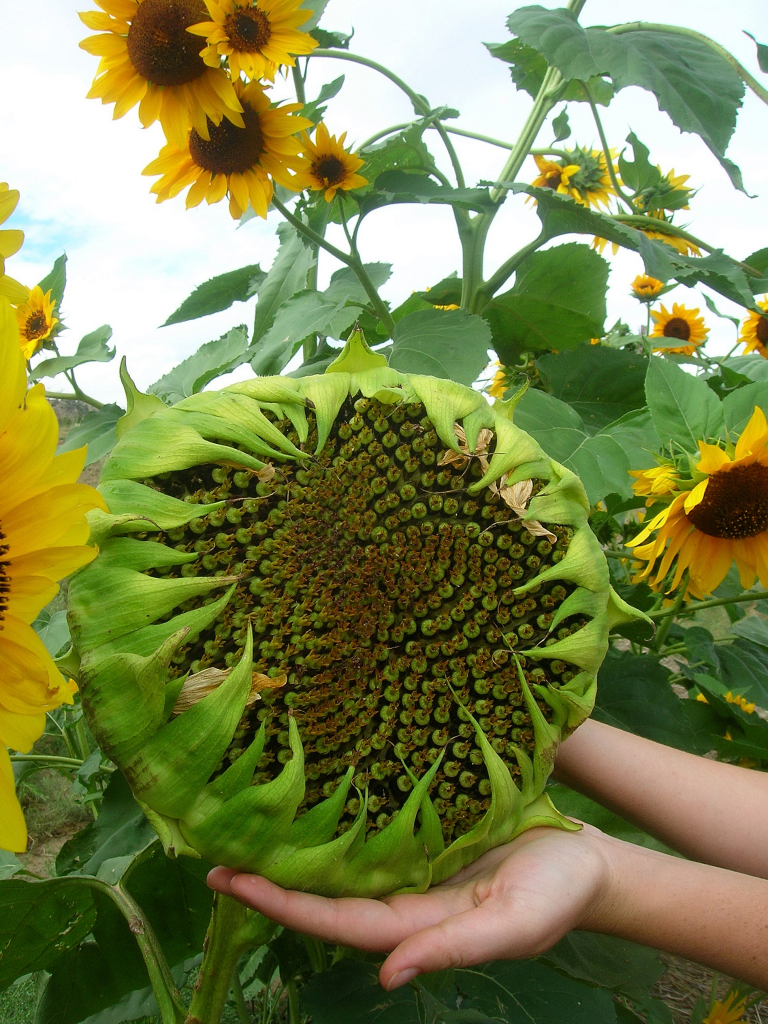
Hopi Black Dye Sunflower was planted in two
90 foot rows representing
two seed sources.
Both germinated close to 100% and we thinned one row
to 1' and the other row to 1.5’.
They were single rows with no side
competition and it did not seem to make any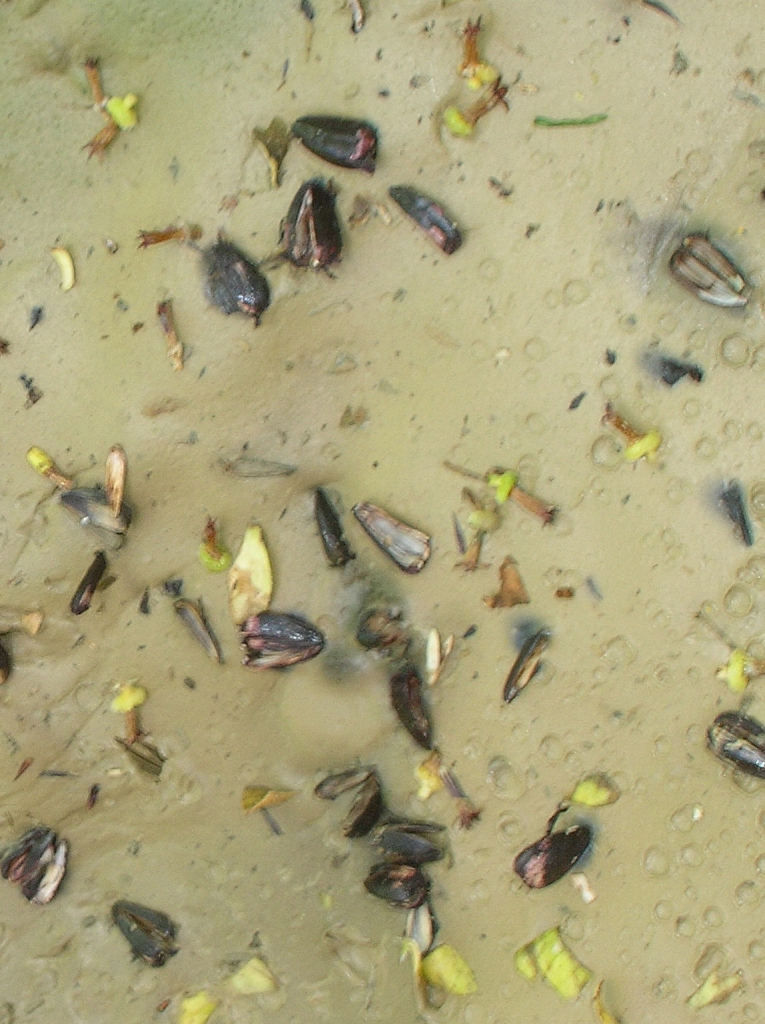 difference to the growth of
the plant to be at 1 or 1.5 foot spacings.
difference to the growth of
the plant to be at 1 or 1.5 foot spacings.
Hulls from bird predation stained the ground after a rain.
It was an unusually wet summer for us(2006).
We lost some plants to
rabbits; we reseeded and saw no difference by harvest.
Some of the
plants were topped by goats. These sunflowers produced multiple small
seedheads. More than half of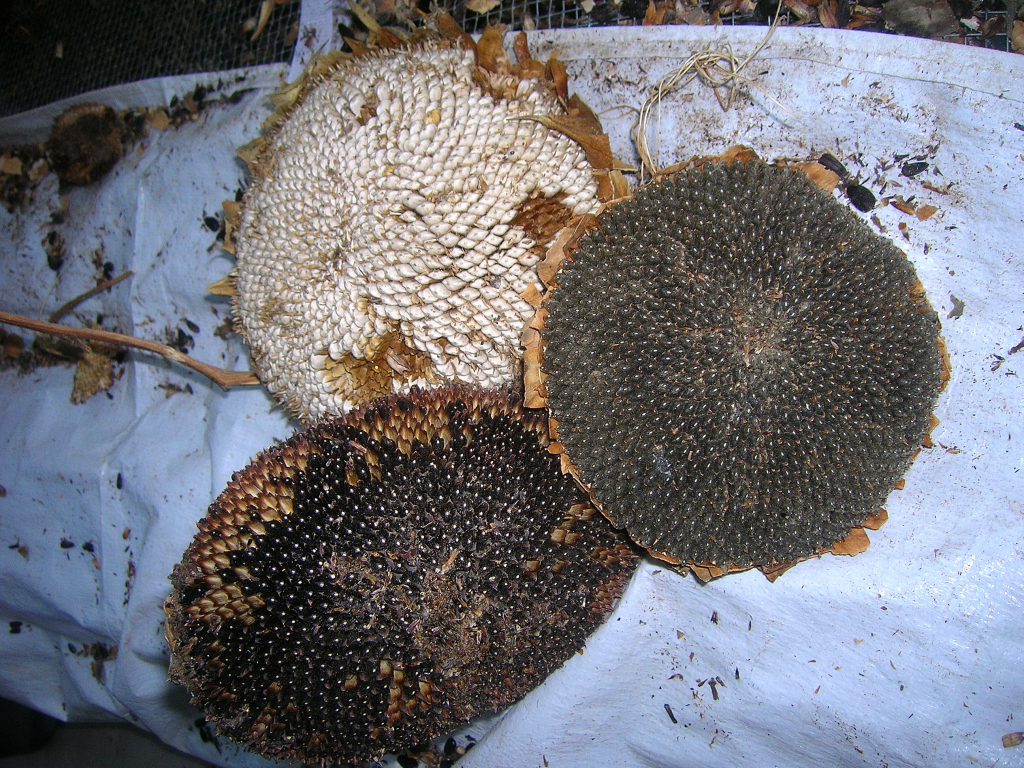 the sunflower plants that we grew expecting large black seeds were anything but.
the sunflower plants that we grew expecting large black seeds were anything but.
Most were multiple, one was big and white.

Neither of the seed sources was entirely satisfactory for
the production of Single Big Heads.
We have selected seed which we will use to reseed this year and see if we can produce a crop of
consistent large seed in single heads.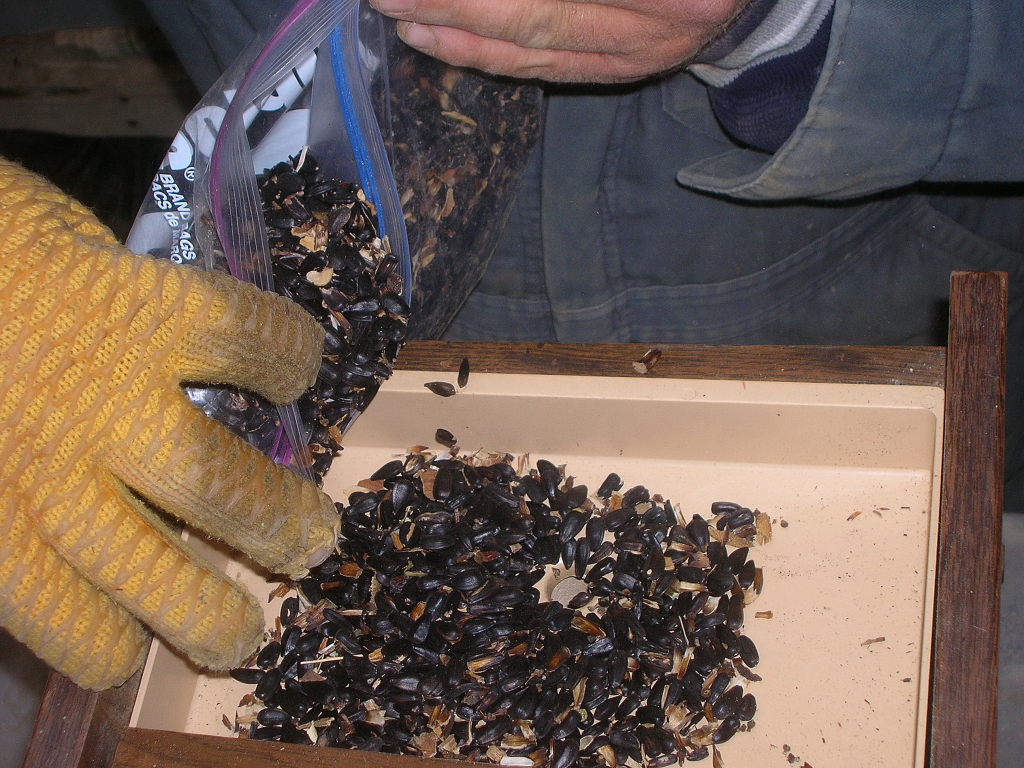
We seperated seed from the flower heads by rubbing the heads on a half inch
grid of hardware cloth.
We produced 31# of seed in 180’
of row.
We purchased a grinder and used it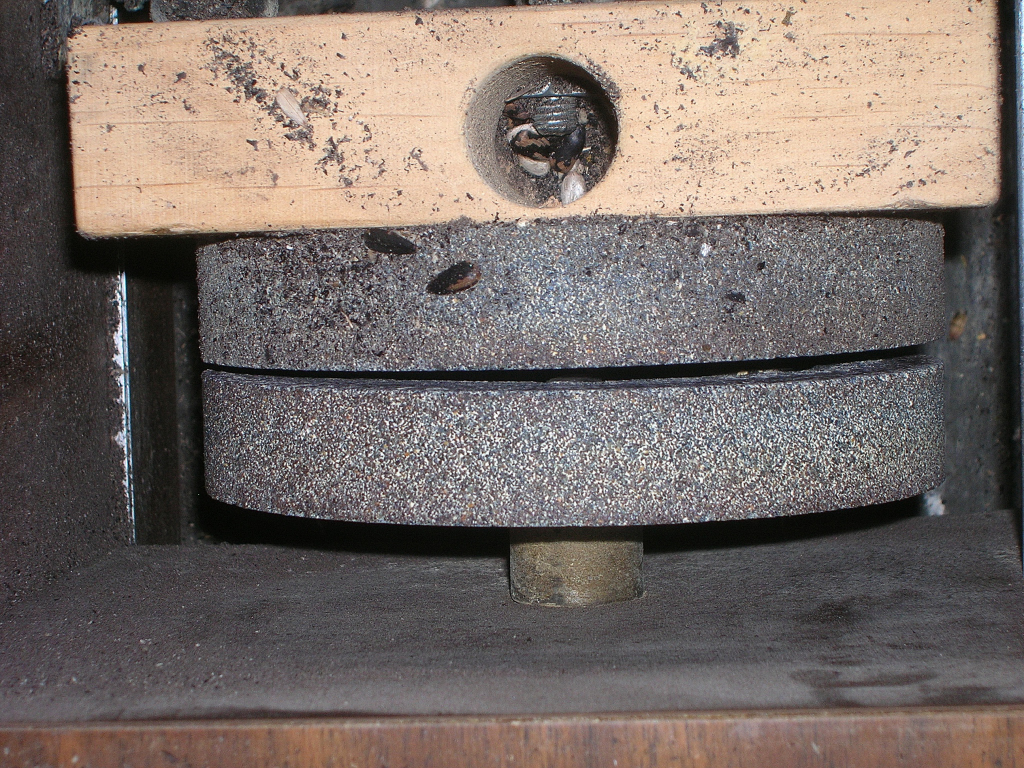 to
successfully seperate kernal from hull in 1.86 pounds of seed producing
1 pound of hulls and .8 pound of sunflower nuts.
to
successfully seperate kernal from hull in 1.86 pounds of seed producing
1 pound of hulls and .8 pound of sunflower nuts.
We will be marketing
the shelled meats for $3.00 per ounce at our Santa Fe Farmers' Market venue.
The shells also will be offered at
$3.00 per ounce.
be offered at
$3.00 per ounce.
Whole seeds will be marketed at $ 3.00 for 1.75 oz.
ziplocks.
We will also offer cardboard seed packets of select large
black seeds for $2.00 per packet (50 seeds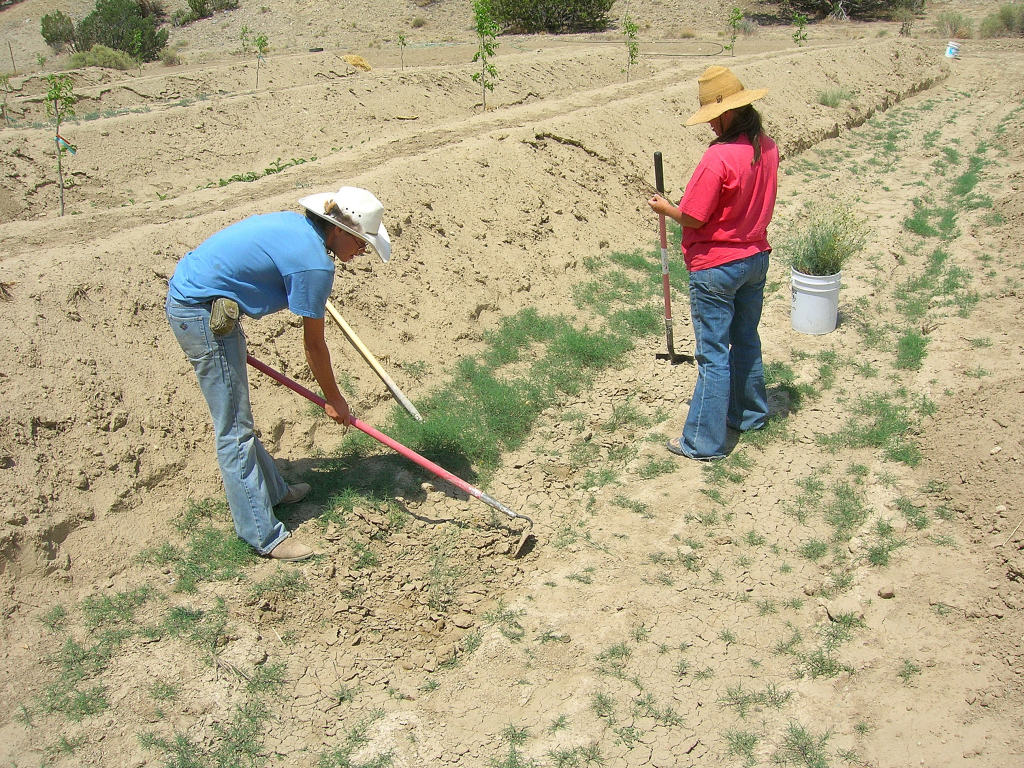 ).
).
Next year we will be
selling the smaller multiheads as flowers at the market continuing to
select for large black-purple seeds.
The
cota starts were supplied by Charles from his plantings in Alcalde.
Cota grows wild here but we believe the transplant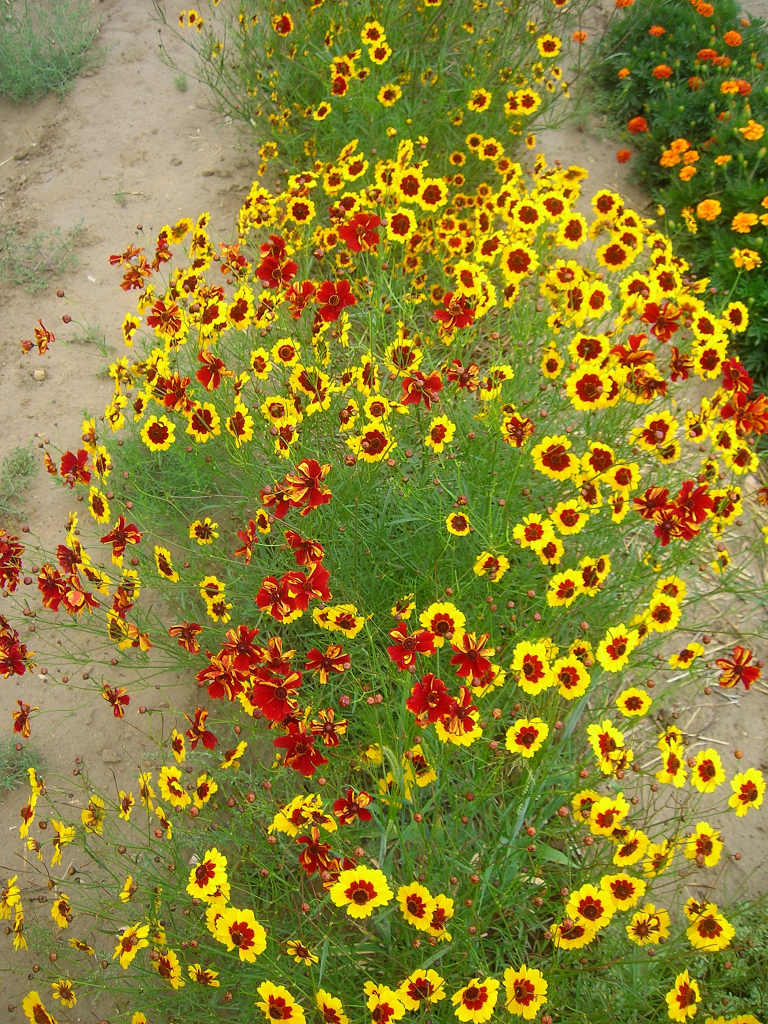 happened too late in the spring. We also wildcrafted cota in June but lost most of that
also.
happened too late in the spring. We also wildcrafted cota in June but lost most of that
also.
We have reseeded (in November) the cota from seed collected
locally and are waiting to see if anything comes of it this spring.
We were trying for a maroon dye from the coreopsis but most of the organic maroon coreopsis seed sprouted yellow flowers.
We had started some marigold and
correopsis in the greenhouse. The remainder of the rows we seeded.
Marigold and correopsis plants weathered the flooding but the seeds
were covered with a thin layer of silt and did not survive. The tepary
and safflower outright drowned in the July 1 run.
some marigold and
correopsis in the greenhouse. The remainder of the rows we seeded.
Marigold and correopsis plants weathered the flooding but the seeds
were covered with a thin layer of silt and did not survive. The tepary
and safflower outright drowned in the July 1 run.
The correopsis we will never do again. The picking is way too tedious.
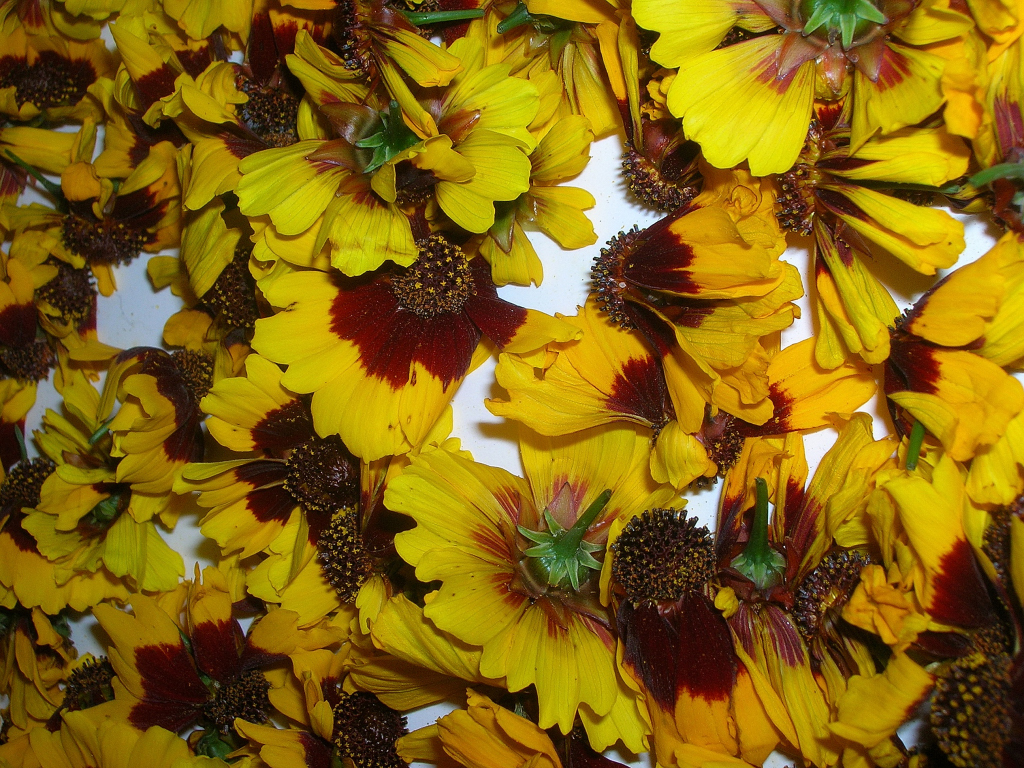

And the maroon correopsis being yellow petaled could be a much bigger
problem than the sunflower not being true to type: you can not get
maroon dye out of yellow flowers.

The marigold we will grow again. It was easy and fast to harvest. We
did sell a bag of 9oz. for $14 to be used at a wedding in place of rice.





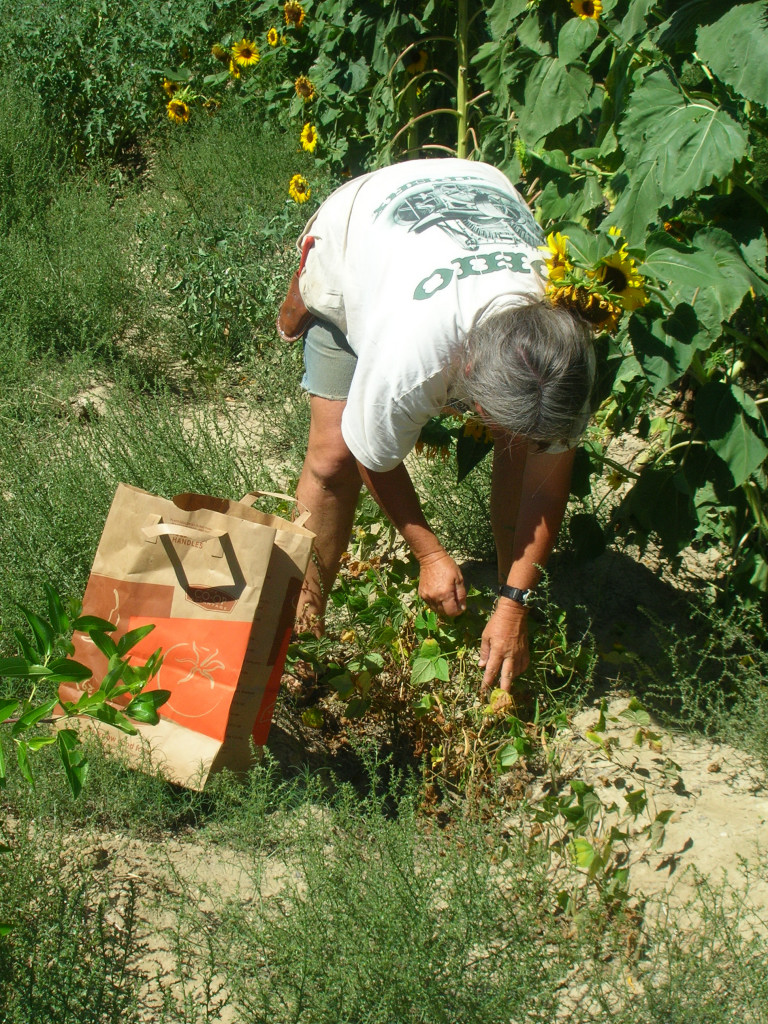
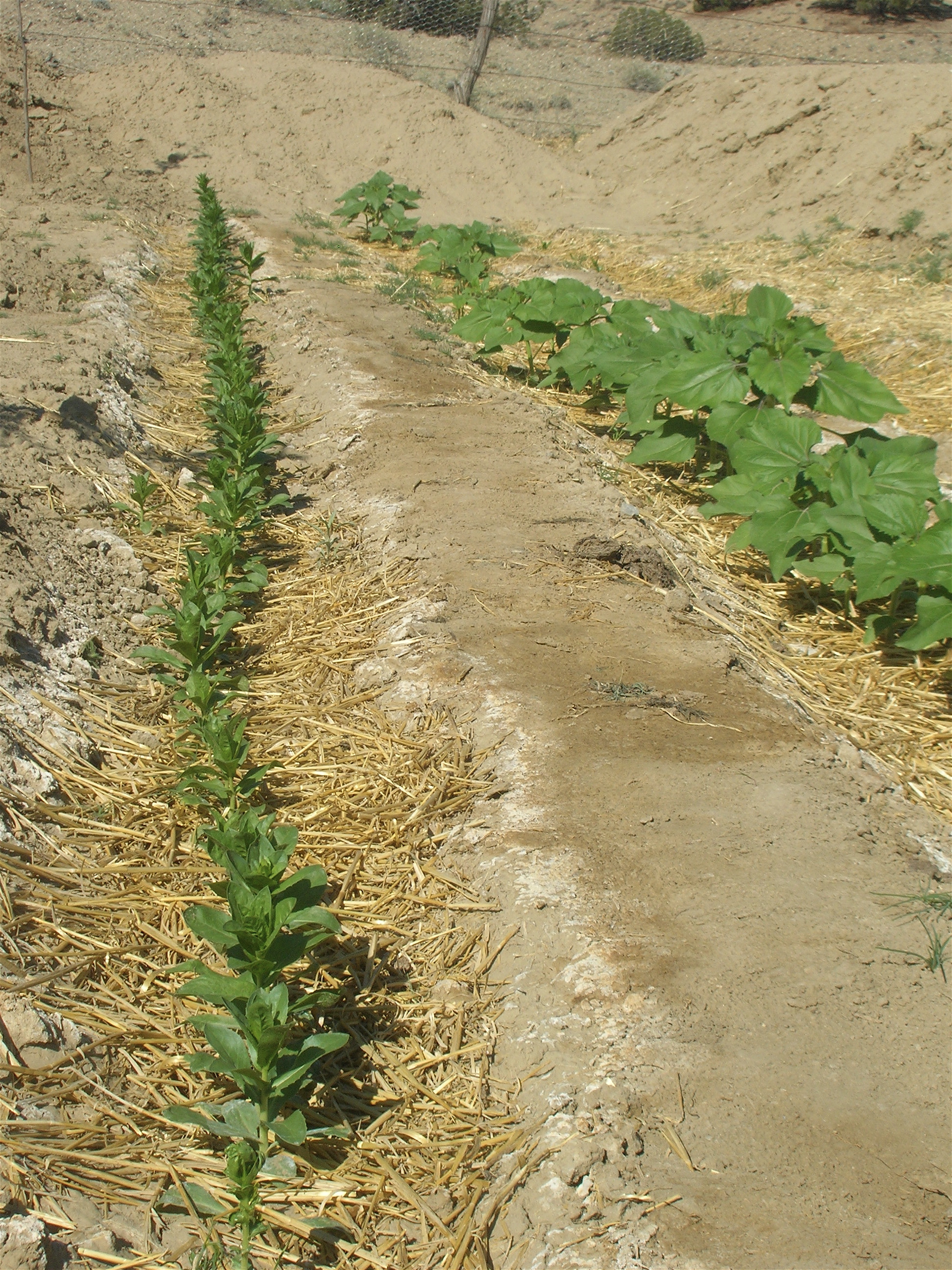
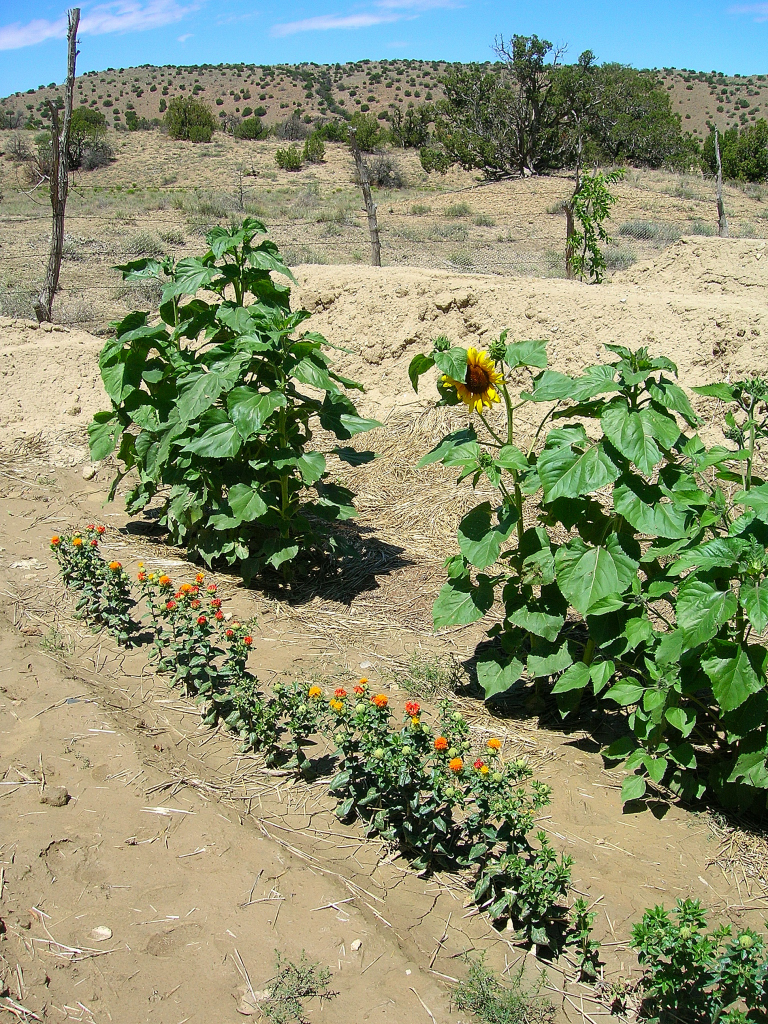
The tepary and safflower,
although having the distinction of being the only plants that have
ever drown in our desert garden, we will grow again this year. On the
sides of the birms, as recommended by Charles Martin. We will be able
to plant rows above the water line from a flood event.

French Brocade Marigold
and Maroon Correopsis and Mitla Black Tepary and Orange Heirloom
Saffflower were all damaged by our May 14 flood.
We had irrigated
heavily the day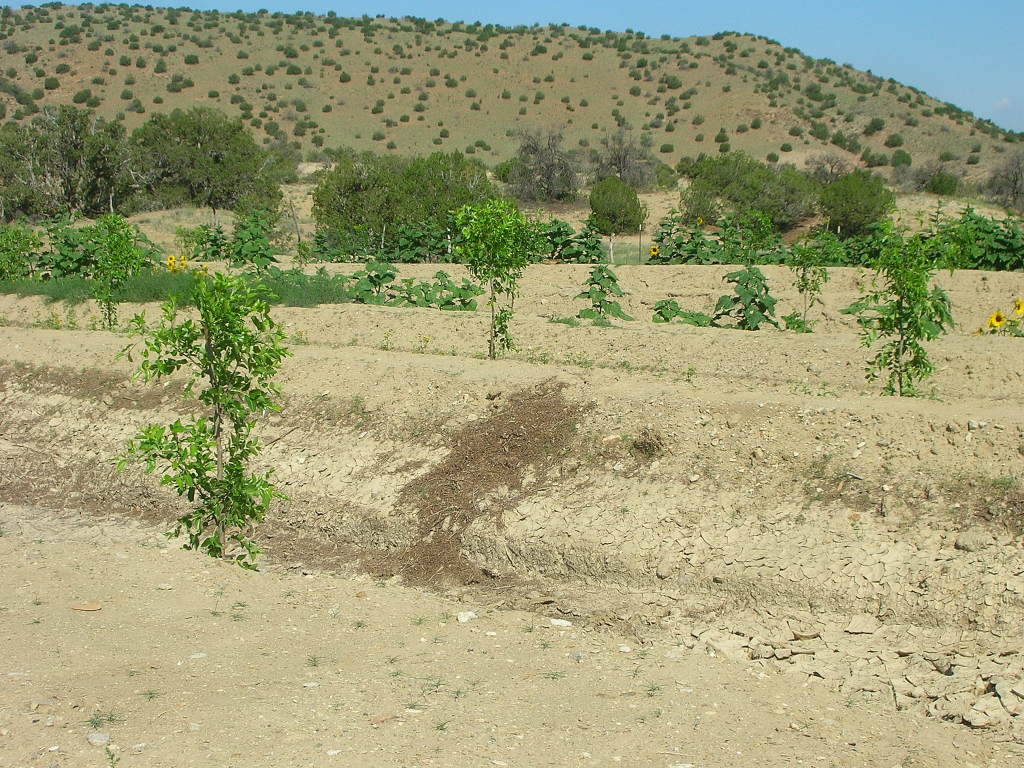 before an early monsoon brought the arroyo run which
covered all the plantings in this garden with a couple feet of water.
before an early monsoon brought the arroyo run which
covered all the plantings in this garden with a couple feet of water.
This happened again the first of July, afterwhich we blocked this
garden off from the arroyo flow.
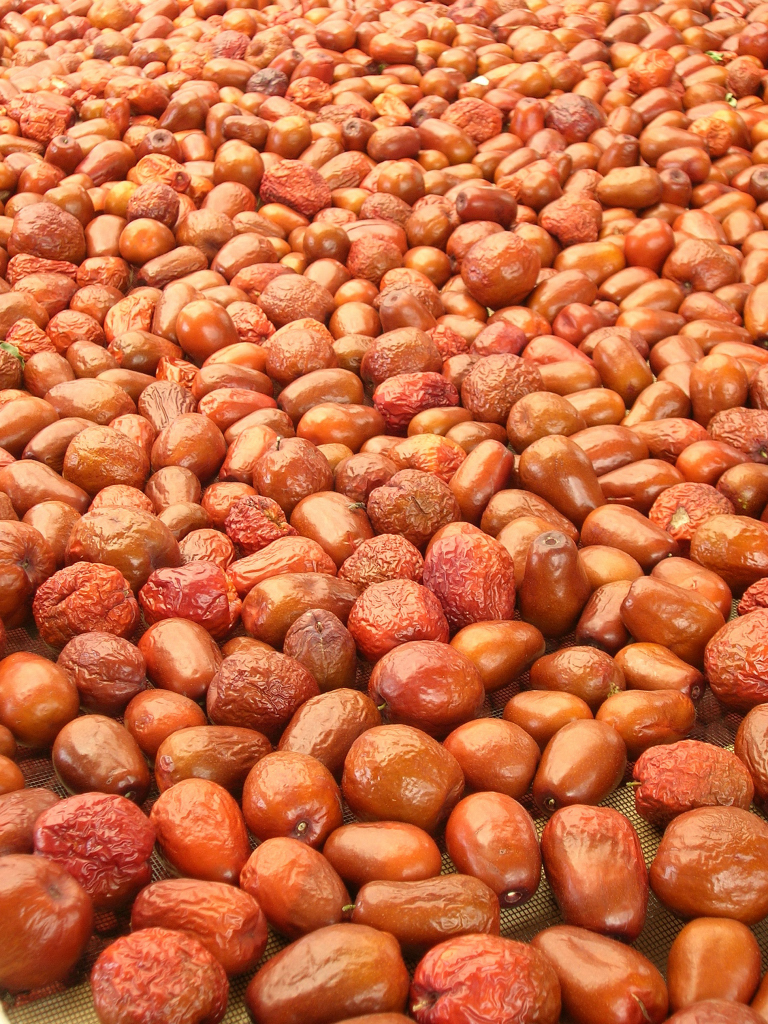
Blocking this flow was not
good for the gardens primary resident, newly planted jujubes. They
thrive on the flood and dry routine. We watered them with a hose, expecting them to add to our fruit production in just a couple of years.
This
project opened up a new line of plants for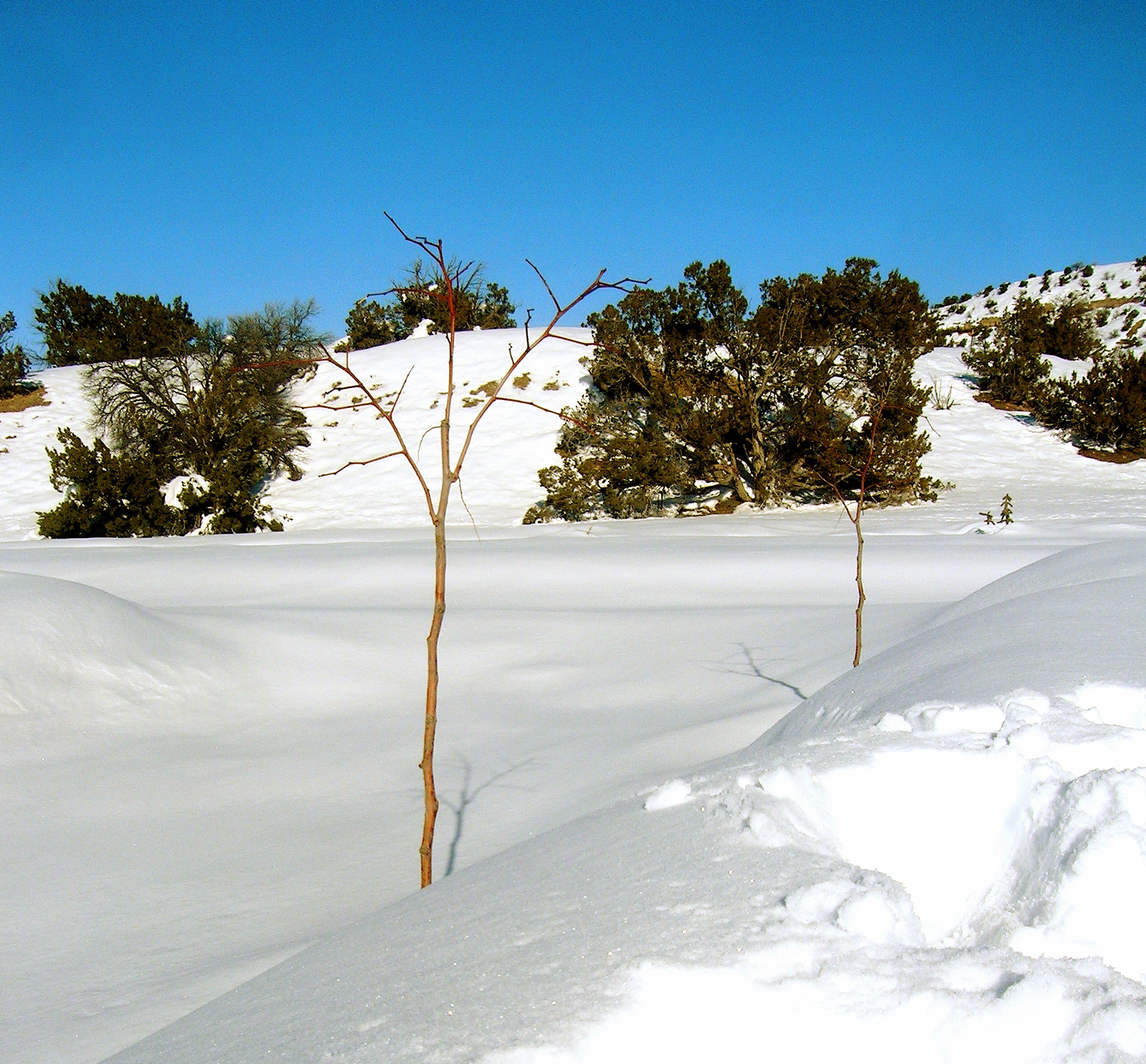 us.
us.
We have been
propagating and producing culinary and medicinals for direct sales at
the Santa Fe Farmers’ Market and dye plants have helped round out the
inventory. And the sunflowers and tepary beans add to our food
production area
as well. We intend to plant a much larger number of
sunflowers in the 2007 season.
Home


 1 foot tall, July
1, the tansy was totally covered with floodwater from a storm.
1 foot tall, July
1, the tansy was totally covered with floodwater from a storm.  which we are presently marketing at $5.00
each as a vermifuge for lice and flies on horses and goats. We are offering tansy flowers at
$3.00 per ounce and have 14# of flowers and 4.5# of leaf. Sticks are selling regularly. (Feb. 1,'07)
which we are presently marketing at $5.00
each as a vermifuge for lice and flies on horses and goats. We are offering tansy flowers at
$3.00 per ounce and have 14# of flowers and 4.5# of leaf. Sticks are selling regularly. (Feb. 1,'07)


 ).
).



 us.
us.